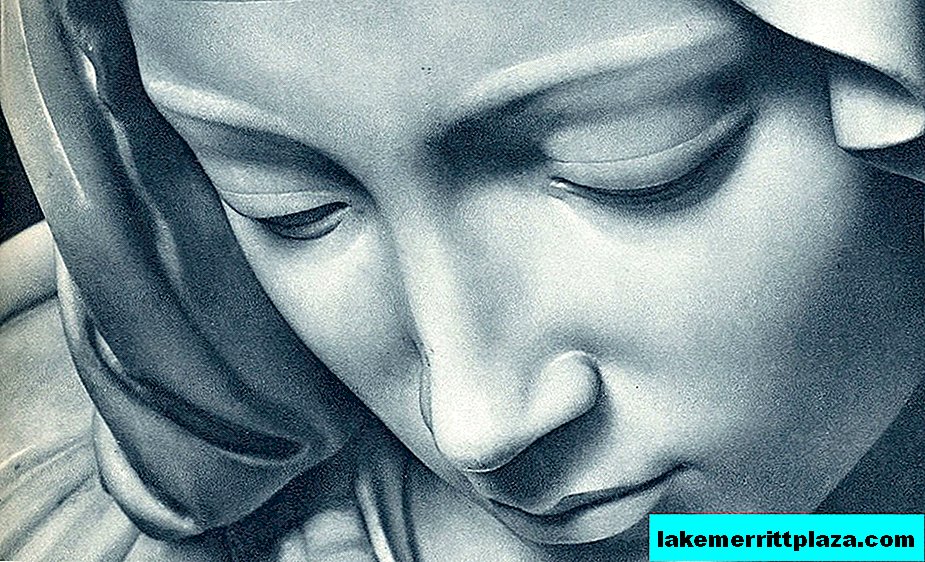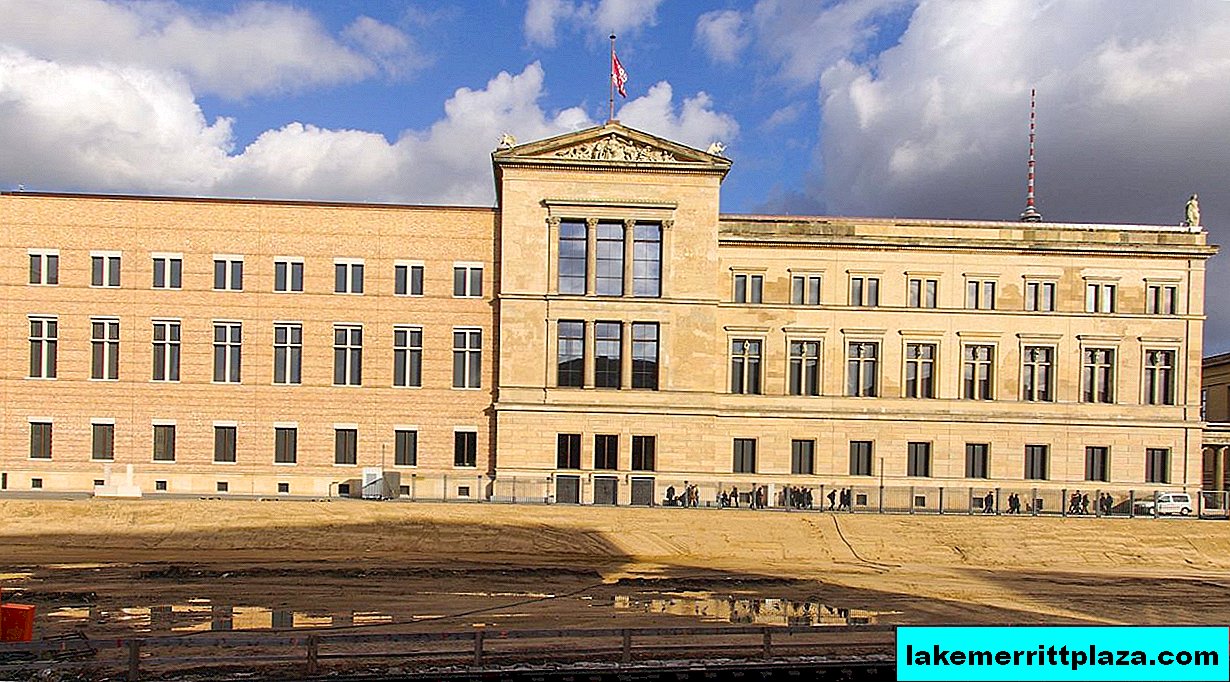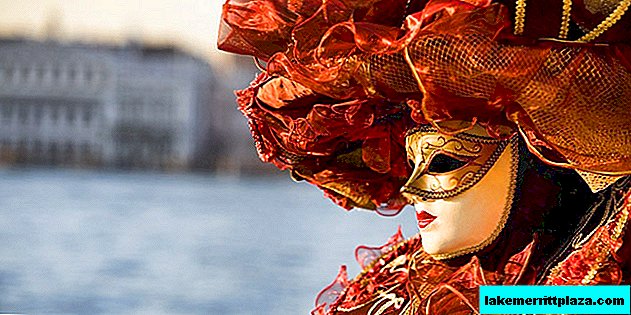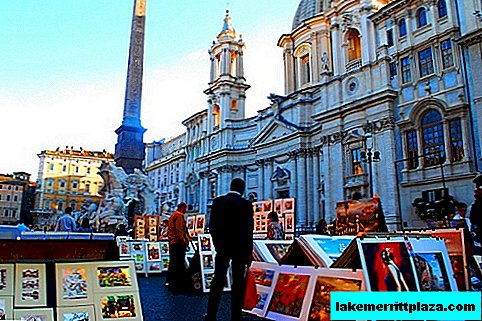The Church of Saint Agatha (Cattedrale di Sant'Agata) in Catania is located on Cathedral Square (piazza del Duomo) opposite the famous fountain Elephant - a symbol of the city. It is almost a historical center, not far from which is located the main city pier. The construction of the cathedral was dedicated to the martyr Agatha, who is the patron saint of Catania. In it, her remains were buried.
Story
The first construction of the temple was begun in the second half of the 11th century. In ancient times, Terme Achilliane was located on this site. Their remains can still be seen under Cathedral Square. During its existence, the cathedral survived perestroika, reconstruction, and restoration from scratch from ruins.
For example, in 1169, a severe earthquake inflicted irreparable damage to a building, of which only the eastern part of the altar remained. They did not have time to restore the destroyed, as again in 1194 there was a big fire, inflicting new significant damage. After that, the church, practically reborn from the ashes, for a long time performs its main functions. Also in 1387, it was supplemented by a 70-meter bell tower, erected a little to the left of the western facade. Later, in the middle of the 17th century, it was still completed on one tier, placing a belfry with a clock on it.
And already after three decades in 1693, a large earthquake that affected the entire valley of Noto (Val di Noto), again destroyed the structure almost to the base. During this incident, more than seven thousand parishioners died. They gathered in the church for prayer together. But the walls and the arch could not withstand the vibrations of the soil and buried all those present under their rubble.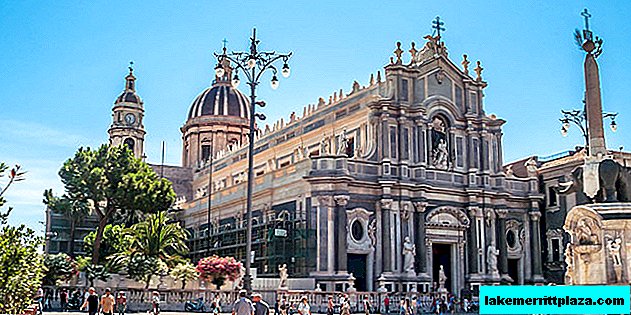
In 1711, the cathedral and bell tower were again restored thanks to the Palermo abbot and architect Giovanni Battista Vaccarini. In the 18th century, he was considered the most talented architect. The master built a church in the style of Sicilian baroque. Around the churchyard, surrounded by a metal wrought iron fence. The fence was decorated with bronze sculptures depicting some saints.
Appearance
The exterior facade of the church is decorated with marble. It is also easy to notice that the building is abundantly decorated with many statues of saints, which are installed in order to protect the city from the possible eruption of Mount Etna.
The main entrance to the cathedral is decorated with 32 wooden panels, on each of which is carved a scene from the life or martyrdom of Agatha. There you can see several emblems of the popes and some Christian symbols.
The western facade consists visually of three levels. Each of them is decorated with Corinthian columns and marble attic. The main portal is crowned with a monumental statue of St. Agatha. On each side of it were the saints Euplus of Catana and Beryl (Bishop of Catana). On different sides of the portal are sculptures of the holy apostles Peter and Paul.
Interior decoration
If you look at the cathedral from above, it becomes noticeable that its shape is a Latin cross, divided from the inside into three naves. The dome, erected in 1802, rises from the eastern side of the temple. The tall windows cut through it allow sunlight to illuminate the entire interior of the church. The niche of the right nave is decorated with a fresco of the Baptism of Christ. There is also a baptistery. Forged balustrade separates it from the main space.
On the right opposite the altar is the tomb of the famous 19th-century composer of Catania, Vincenzo Bellini. It is made of marble and decorated with bronze. Further in the depths of the nave is the magnificent chapel of St. Agatha. It is decorated with frescoes of the 18th century. Above the altar there is a bas-relief depicting Saint Agatha crowned with a crown of glory. She is surrounded by saints Peter and Paul, as well as the evangelists Luke, Matthew, John and Mark. Here on the left side you can see a small golden door. It leads to a crypt located underground. There is a sculpture of a bust of Agatha and her power.
The main altar is located in the middle apse, the only one preserved from the original building. It is surrounded by wooden choirs. In the left nave there are four chapels dedicated to the Holy Crucifixion, Anthony the Great and St. George the Serpent. They contain the sarcophagi of the bishops of Catania.
Also directly in the temple are the remains of some Sicilian monarchs. For example, Constance of Aragon, Frederick III, Giovanni di Randazzo (Giovanni di Randazzo) and even Louis of Sicily. Constance was buried with her magnificent tiara. But later it was removed from the grave and stored separately in the sacristy of the temple. The remains of Cardinal Dusmet are also buried next to the crowned persons.
Legend of Saint Agatha
Once upon a time in a small town on the island of Sicily, a little girl was born, who was named Agatha. Her family was one of the first to adopt Christianity, and therefore from childhood she grew up very religious and subsequently even decided to devote her whole future life to the Savior.
Unfortunately for herself during the persecution of Christians, Agatha was captured among the first. At that time, the city was ruled by the proconsul of Quintian (Lucius Tiberius Claudius Aurellius Quintianus Pompeianus). Arriving to look at the representatives of the new religion, who were to be executed, he was subdued by the beauty of the girl and decided to have mercy on her in exchange for bedding. However, the young Christian did not give up under the rude pressure of passion, and was placed for a whole month in the house of harlots.
But Agatha's faith was so strong that her spirit did not break, but only grew stronger. And to the repeated claims of the consul, she also refused. For this, the girl was sent to prison and subjected to terrible torture. During one of them, she even had one breast cut off.
Further versions of the legends diverge. According to one of them, Agatha was burned in the main square. But another says that after the last torture, Saint Peter appeared to her and healed. The tormentor Quintian was so amazed at what had happened that he ordered the torture of the unfortunate woman with peaks and burning coals right in front of him.
The persistent girl could not endure such torment, even with the support of the patron saints. She died heroically, not having renounced her faith on February 5, 251. The news of a terrible death quickly spread throughout Sicily. And the great martyress became a revered symbol in the struggle of the inhabitants of the island with the Roman invaders.
But as they say, nothing goes unpunished. And those who had a hand in the torture of St. Agatha soon died during the earthquake. After this, the strongest eruption of the volcano began. Lava almost reached the city, when the inhabitants, taking with them a cover from the tomb of the saint, went to meet her. Before the most hot stream, the bedspread turned bright red and after that the lava movement stopped. What happened made such a strong impression on everyone that the holy Great Martyr Agatha was proclaimed the patroness of Catania.
Here is such a legend connected with the Cathedral of the city. The sacred structure deserves to be examined, if not because of the history associated with it, then at least because it is the largest church building in the city.
- Official site of the cathedral: www.cattedralecatania.it
Next to it is the monastery of St. Nicholas, which is especially attracted not by its decoration, but by the organ. The largest library in Sicily is also located here.



